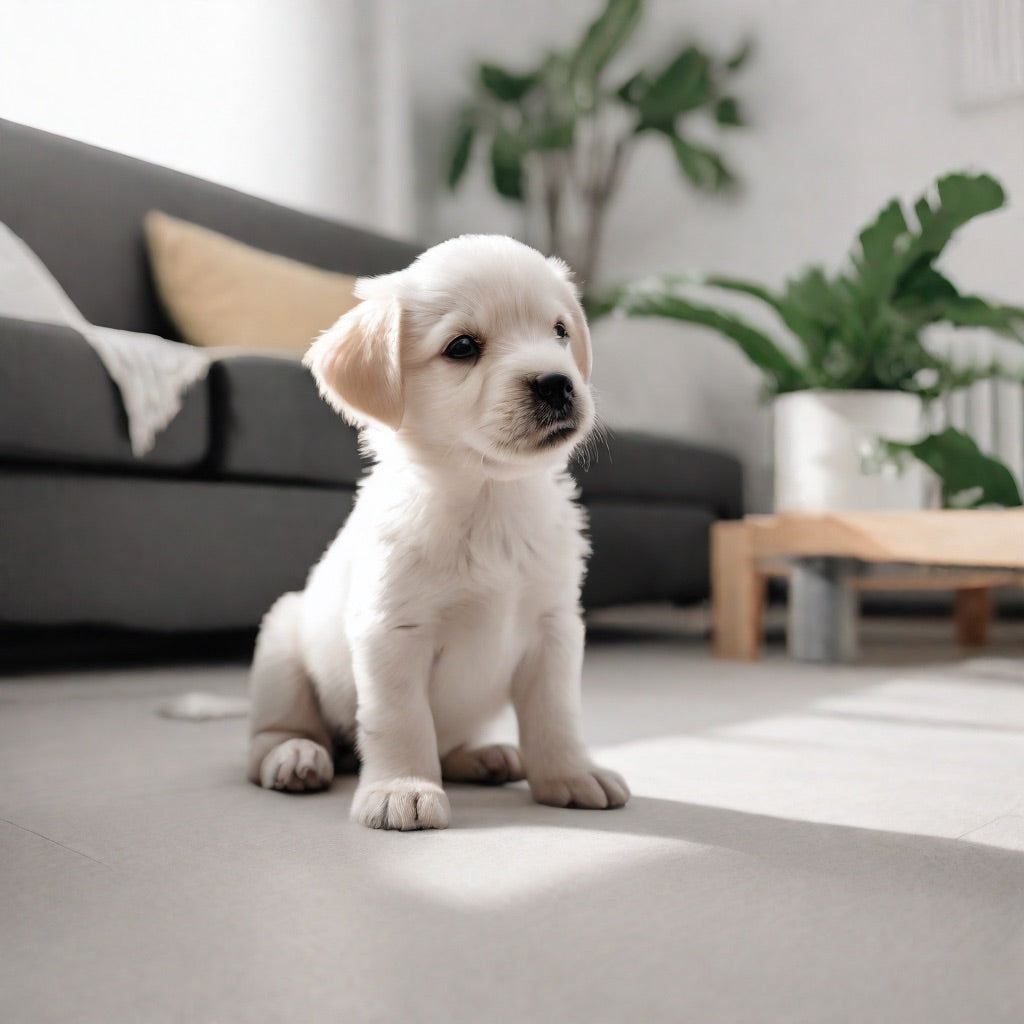
Helping Your Dog Beat Separation Anxiety
Share
A Pet Parent's Guide to Soothing Separation Anxiety in Dogs
Key Takeaways
- Crate training can create a safe, comforting space for some anxious dogs — but not all.
- Consistent routines and gradual independence training reduce anxiety.
- Enrichment activities, exercise, and positive reinforcement help dogs cope when alone.
- Professional support may be needed for severe cases.
1. Understanding Your Dog's Separation Anxiety
Hey there, fellow pet parents! 👋 Is your fur baby getting super stressed when you leave the house? Don’t worry—you’re not alone!
Separation anxiety is more than just a sad goodbye. It’s an intense fear response to being alone, and it can show up in many ways.
Common Signs:
- Excessive barking, whining, or howling when you’re gone
- Destructive behavior (RIP favorite shoes 👟)
- Accidents in the house (even though they’re potty trained!)
- Pacing, drooling, or showing physical signs of distress
- Following you everywhere (yes, even to the bathroom!)
🧠 Did You Know?
Some dogs experience isolation distress rather than true separation anxiety. That means they panic when left completely alone but feel calm if another person or pet is present. The strategies below help with both conditions.
2. Creating a Safe Haven: Crate or Comfort Zone

Crate training can be helpful if your dog enjoys their crate — it gives them a cozy, den-like retreat. However, for some dogs, confinement increases stress. Always watch for signs of discomfort (panting, escape attempts, excessive barking).
Setting Up the Perfect Crate:
- Size: Big enough to stand, turn, and lie down comfortably.
- Comfort: Soft blankets, favorite toys, and a treat-stuffed Kong make it inviting.
- Environment: Cover the crate with a light blanket to create a den-like feel, and keep it in a quiet, low-traffic area.
💡 Alternative Option:
If your pup dislikes crates, use a gated room or playpen instead. The goal is safety and comfort, not confinement.
3. Building Independence: Baby Steps to Success
Gradual desensitization and counterconditioning are key. These training methods help your dog form calm, positive associations with being alone.
Mini-Separations:
- Step out for just 30 seconds.
- Return before any anxiety starts.
- Gradually increase your time away.
- Reward calm behavior with praise or treats.
Keep your departures and returns low-key. Overly emotional goodbyes or greetings can heighten anxiety.
4. Enrichment: Keep Their Mind Busy

When dogs have something engaging to do, they’re less focused on your absence.
Puzzle Toys & Games:
- Stuff a Kong with frozen peanut butter or kibble.
- Use treat-dispensing balls or snuffle mats for foraging fun.
- Create a “treasure hunt” trail with treats hidden around the house.
Brain Games:
- Practice obedience cues before leaving — mental work tires dogs out too!
- Rotate toys to keep things interesting.
Nourish a Calm Mind
A balanced diet is the foundation of your dog's well-being. Our fresh, all-natural meals can help support a stable mood and reduce anxiety-related behaviors.
Explore Our Fresh Meals5. Exercise & Routine: The Secret Soothers
A tired, mentally satisfied dog is a calmer dog.
- Daily Exercise: Regular walks, fetch sessions, or doggy playdates help release energy and reduce anxiety.
- Predictable Routine: Feed, walk, and rest around the same times each day. Structure builds a sense of safety and control.

6. Seeking Professional Help
Sometimes, love and training alone aren’t enough — and that’s okay.
Red Flags That Warrant Professional Support:
- Extreme destructive behavior
- Self-injury attempts
- No improvement after several weeks of consistent training
- Full-blown panic (vomiting, breaking out of crates, refusal to eat)
Who Can Help:
- Certified dog trainers (positive reinforcement only)
- Veterinary behaviorists (experts who can prescribe medication if needed)
- Your regular veterinarian, who can rule out medical causes and refer you to specialists
Get Pawsitive Tips in Your Inbox!
Subscribe to our newsletter for more expert advice, special offers, and heartwarming stories.
🩵 Final Thoughts
Your pup’s anxiety won’t disappear overnight — and that’s perfectly fine. With patience, consistency, and compassion, you’re not just reducing fear — you’re building confidence. 💪
Celebrate the small wins! Maybe today they barked for 5 minutes instead of 10, or finally enjoyed their Kong while you were gone. Those are pawsitive steps forward! 🎉
Have you tried any of these techniques? What’s worked for your furry friend? Share your experiences below — let’s help each other create calmer, happier pups. 🐾
Frequently Asked Questions
Can crate training make separation anxiety worse?
Yes, for some dogs, it can. If a dog already has anxiety about being confined or isn't properly introduced to the crate, forcing them inside can increase their stress and panic. It's crucial to make the crate a positive, safe space and never use it for punishment. If your dog shows signs of distress, consider an alternative like a dog-proofed room.
How long does it take to see improvement in my dog's anxiety?
Progress varies greatly depending on the dog's individual temperament and the severity of the anxiety. Some dogs may show small improvements within a few weeks of consistent training, while others might take several months. The key is patience, consistency, and celebrating small wins along the way.
Is it okay to leave the TV or radio on for my anxious dog?
Yes, leaving a TV or radio on can be helpful for some dogs. The background noise can muffle startling sounds from outside and provide a sense of companionship. Some studies suggest that classical music or specific audiobooks for dogs can have a particularly calming effect. It's a simple technique to try alongside other training methods.
⚠️ Disclaimer
This article is for educational purposes only and is not a substitute for professional veterinary or behavioral advice. Always consult your veterinarian or a certified behaviorist before starting a new training or treatment plan.
📚 References
- American Veterinary Society of Animal Behavior (AVSAB). Position Statement on the Use of Punishment for Behavior Modification in Animals. https://avsab.org
- Overall, K.L. (2013). Manual of Clinical Behavioral Medicine for Dogs and Cats. Elsevier.
- Landsberg, G., Hunthausen, W., & Ackerman, L. (2012). Behavior Problems of the Dog and Cat (3rd ed.). Saunders.
- “Separation Anxiety.” American Society for the Prevention of Cruelty to Animals (ASPCA). https://www.aspca.org
- Fear Free Pets. “Managing Separation Anxiety in Dogs.” https://fearfreepets.com
